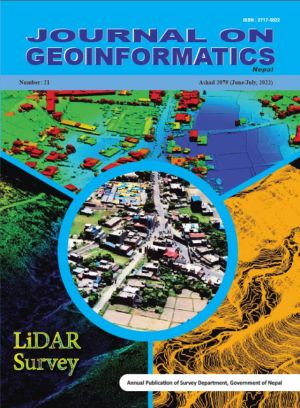Analyzing Water Poverty Components Using Geospatial Tools: Resource and Environmental Constraint in Kathmandu District
DOI:
https://doi.org/10.3126/njg.v21i1.48749Keywords:
Water poverty, Groundwater, Topographic Wetness Index, RUSLEAbstract
This current paper examines water poverty situation in Kathmandu district in terms of water resource and environment constraints. Integrated methodology was adopted for the study. Water source sample survey was carried out using GPS tool. Study area comprised total of 13 water sample sites. Household questionnaire survey was carried out for water poverty mapping and analysis. Resource component of water poverty comprised indicators, namely seasonal variation in water availability, water supply frequency and groundwater recharge potential. The environment constraint component comprised water quality rate of soil erosion and topographic wetness index. The result show that the average calculated value of water resource limitation component is 6.31 and out of 13 studied communities, 7 communities fall below average. It is found that environmental constraint is less associated with urban housing density. It is found that environmental constraint is less associated with urban housing density. The average calculated value of environmental component is 3.43 and out of 13 studied communities, 8 communities fall below average. Spatial variability in water poverty is prominent and highest water poverty is found in urban cores. Communities with lower water poverty are found in peri-urban location near the foothills. The average calculated value of water poverty is 9.74 and out of 13 studied communities, 9 communities fall below the average. The study concluded that water poverty index and resultant map is a very effective tool to visualize the distribution of water poverty at local spatial scale and to present the complex nature of water poverty.




